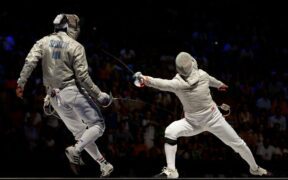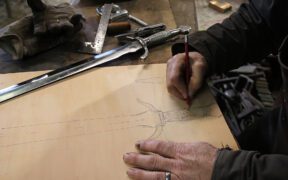Our content features commercial links to our products, committed to transparent, unbiased, and informed editorial recommendations. Learn More
Foil 101: History, Science, and Techniques
NO AI USED This Article has been written and edited by our team with no help of the AI
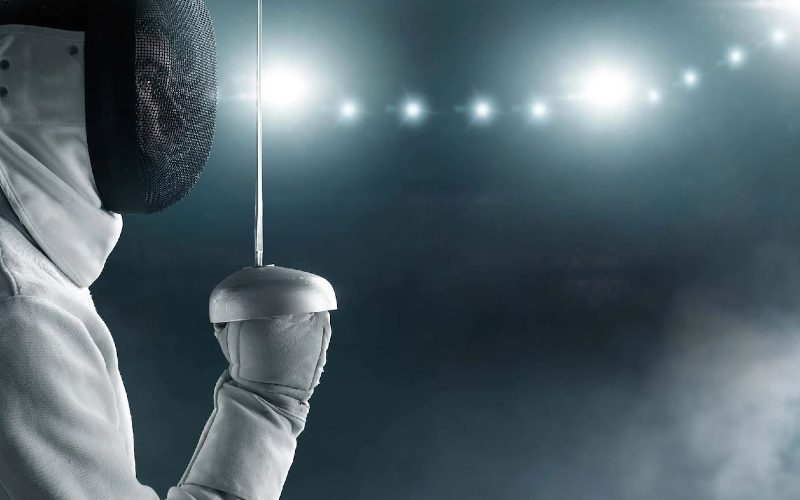
The foil is the first and probably the most important sword when it comes to fencing. It is modeled after the rapier and grew to be one of the biggest fencing swords of the modern era.
In this article, we will tell you everything you need to know about foils. We will begin by explaining the different types of foils and their most common characteristics. We will discuss the best techniques to use a foil, as well as how it is used across the world. Lastly, you’ll learn about its intriguing history as well as some other interesting facts.
Types of Foil
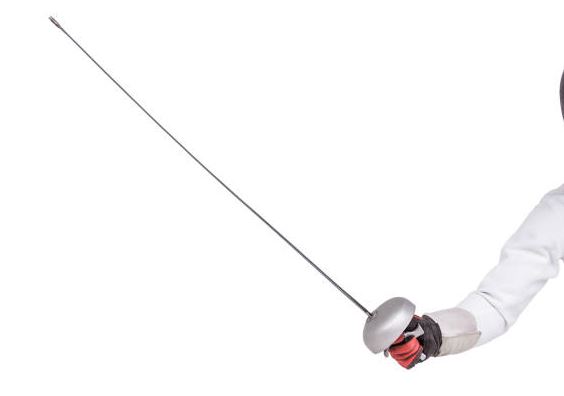
The foil can be classified into 2 distinct types. However, they aren’t very different from each other. The biggest differences are of course their origin (France and Italy), their handles, and the strap (or lack thereof) attached to them.
French
The original foil was made in France. It has a plain, slightly curved handle without any straps on it. It can have different shaped guards, but the traditional foil guard is the most common.
Italian
The Italian foil comes from Italy and was made a little bit later than the French foil. The biggest difference between the two is that this one has a crossbar about 5cm (2 inches) behind the guard. It also has a strap that binds the hand of the fencer to the crossbar and handle.
This crossbar and strap are why some would say that the Italian style foil offers a somewhat stronger grip, while the French style offers much more freedom in movement and strikes.
Characteristics of the Foil
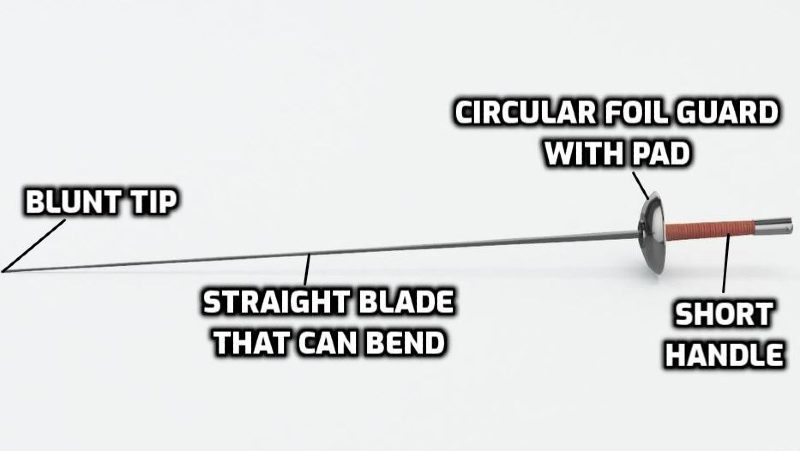
The foil can be easily recognized by its obvious characteristics. It is a medium-sized sword, with a very thin blade that has a blunt tip. The guards are circular and padded, and the handle is straight and short.
Blade
The blade of the foil is what makes it the best tool for fencing. It is made from a material that won’t hurt someone when they are struck and it is extremely flexible. This flexible blade is usually around 80-90cm (31-35 inches) long which gives it enough length to strike someone from afar.
It has a rectangular cross that starts at the guard and runs to the very end of it. It also has a blunted point instead of a sharp one.
Material
The blade of the foil is made using low carbon steel or sometimes maraging steel. This composite metal bends, flexes, and twists on impact so it doesn’t hurt the opponent.
In comparison to other sporting activities, even non-combat sports, fencing injuries are very rare. Even when they do happen in fencing, they are almost always twisted ankles or pulled muscles. Injuries are rarely ever caused by the blade itself.
Guard
The guard is the flat, curved metal piece that goes all the way around the base of the blade above the handle. The guard provides protection for the fencer’s hand. They are usually around 10-12cm (3.9-4.7 inches) in diameter.
Guards come in a variety of styles and sizes for epee, foil, and saber fencing. Fencers usually have a favorite type of guard based on weight, feel, safety, hand size, and other factors.
The guard for the foil comes in three shapes and sizes. It is usually seen in the foil, epee, or sabre form. While you might think that the other guards are specifically made for other sparring swords, they can be also used on the foil.
Foil
This is the most basic and classic guard for the foil, hence the name. The foil guard is basically a smaller bell guard that is just wide enough to cover the hand to the left and right.
Epee
The epee guard for the foil is by far the largest guard. It is a circular, round shape metal bell that completely covers the hand of the fencer. This is the best guard for protecting the fencer’s hand. Many beginner foil users choose this guard because of its protection.
Sabre
The sabre guard for the foil is a ball-shaped disk that is slightly bigger on the right or the left side of the hand. This guard is mostly used for slashing attacks, but some foil users choose it just out of personal preference.
Pad
The pad is just a covering on the inside of the guard. It is only there for the fencer’s comfort. It keeps their fingers and knuckles from getting injured on the metal bell guard during a match. Pads can be made of leather, plastic, or cloth (felt).
Handle
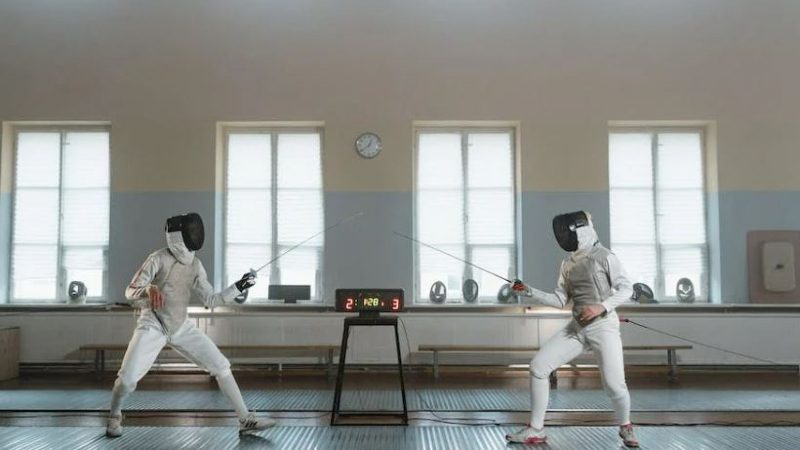
The handle is directly under the guard of the foil. It is usually 15-20cm (5.9-7.8 inches) long and gives the fencer a place to get a strong grip on the foil. The handle is very slim so that the fencer can grip it with ease. Since the foil is used for thrusting, the handle doesn’t need to be thick or wide.
There are two types of handles for the foil; the pistol handle and the French handle.
Pistol
The name “pistol handle” comes from the fact that the handle has a small grip that sticks out from the main shaft and – you guessed it, makes it look like a pistol.
With this grip, fencers can control the blade more precisely and make stronger moves with the foil. This grip makes the hand stay in one place on the foil and prevents it from sliding up or down. Fencers choose pistol grips based on their own preferences and even standard pistol grips are often altered by fencers to make them more comfortable.
The pistol handle is used more and more by foilists these days. Often, beginners also use the pistol handle since it offers a much better grip for the users.
French
The French handle is either straight or has a small bend to it. It gives the fencer different options because he or she can hold the grip close to the pommel for a longer reach with less force in parries and beats, or relatively close to the guard for more force but a shorter reach.
There are various ways to grip the French handle, and each foil or epee fencer ends up using the one that works best for their style. In competitive fencing, the French handle is used by epee fencers more.
Socket
The socket is just a part of the foil where the body cord can be plugged into the electrical part of the point of the foil. It’s located between the guard and the grip. Sockets are mainly found on newer models of fencing foils.
Scabbard
Foil and fencing swords have their own scabbards. They are usually as long as the sword itself or something that is only put on the blade. It is typically made out of fabric and most of the time is waterproof.
Weight
The maximum allowed weight for a foil in competitive fencing is 500g (17.5 ounces). However, the typical weight for fencing swords is around 350g (12 ounces).
These swords are very light, primarily because it is used only for thrusting. Also, the material the swords are made from is very lightweight.
Size & Length
The overall length of the modern foil is around 110cm (3.7 feet). The length can vary from sword to sword and be changed if needed. Throughout history, it has been tweaked and shortened or lightened to be the perfect size for thrusting.
Uses for the Foil
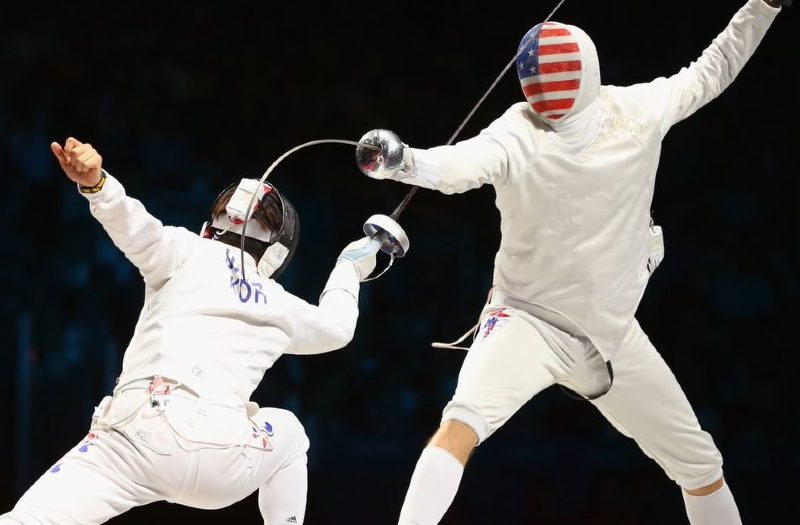
The foil is held with just one hand. It is a very light sword that wasn’t and isn’t meant for any combat scenarios other than fencing. It offers virtually no threat of injury and is very easy to use. Still, if you do decide to try one out, you will need to have special fencing equipment.
Martial Arts & Fencing
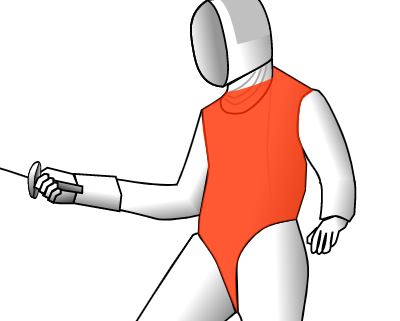
The foil was the first weapon that both men and women used in international sporting events. In competitions, the point of the foil must touch a target that goes from the opponent’s collar to the groin in the front of the body and to a line across the top of the hips on the back of the body.
Since 1960, both men and women have had the same objectives in a fencing match. A defender also loses a point (touch) if they move back more than 4 meters (13 feet). Touches other than those described above are illegal, but the only penalty is that play stops. Any hits made between the initial time of the foul and the start of the match are thrown out.
Most of the time, the person who is attacking has the right of way and the person who is defending must parry, or halt the strike before making a counterattack (riposte). The fencer who has the right of way gets a double touch. In 1956, international events switched to using electric foil scoring, but judges still decide who has the right of way.
Depending on how the fight is scored, the winner is the first person to touch their opponent 5 or 15 times.
Gear
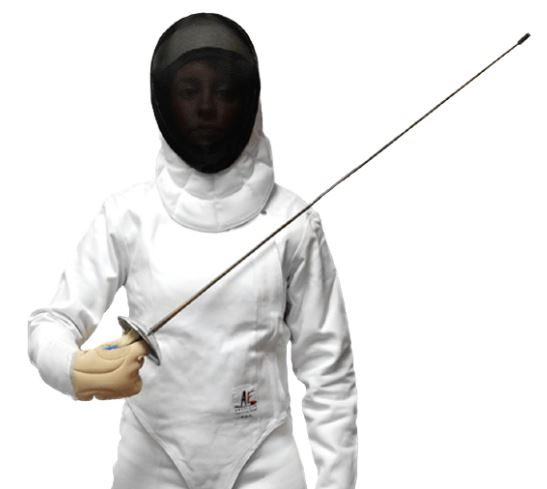
Fencing gear is a must if you decide to give the foil a try. While it is a sword with a blunted tip, the main reason why fencing has very few injuries is because of the gear fencers wear.
Fencing gear consists of a full uniform that starts at the neck and ends at the feet. On the face and the head, a fencing mask is placed which offers protection, but limited visibility. Gloves are worn on the hands as well as shoes that are light and easy to move in.
You are usually able to find a lot of HEMA gear in sports shops.
History of the Foil
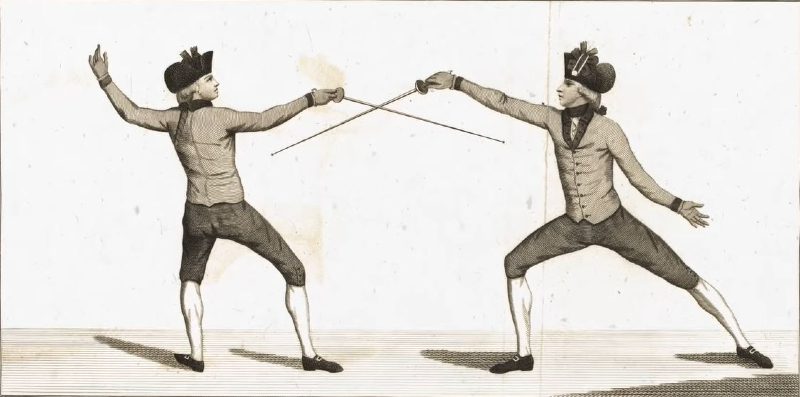
In France in the middle of the 17th century, the foil was used as a practice weapon for the smallsword which was a light, one-handed sword. The foil allowed them to train fast, elegant thrusting for fencing. Fencers made the point duller by wrapping the blade in foil or putting a knob on it. This knob is called a blossom, or the French fleuret.
In the 19th century fencing was mostly a skill enjoyed by the nobility. In Europe, its popularity grew and fencing became a very popular way of dueling to prove something or to make a show of strength and authority.
Slowly but surely as time went on, the popularity of the foil grew. With time it became the fencing weapon of choice and still holds that same rank in modern times. Modern fencing today uses electricity so that the referees will know when someone has been struck in a tournament.

The Men’s Foil Individual event is one of the few sports that has been at every modern Olympic Games. Team foil competitions started in 1904. Women’s foil events started in 1924 with women’s team events starting in 1960.
Foil vs. Rapier Sword

The biggest difference between the foil and the rapier is the death count. As you may know, the rapier came into existence way earlier than the foil. It is made of steel and sharpened to be battle-ready. It can definitely kill and was used to do a lot of killing in its heyday.
Both of these swords are extremely straight and almost equally long. While the rapier can be used for thrusting just like the foil, it can also be used for slashing as well.
The rapier came about in the 15th century and it quickly became the sword that would finish all types of duels. Sometimes with an injury, but most of the time – with death. The foil on the other hand is from the 17th century, and while in the first centuries after its creation it could have been deadly, it was mainly used to safely fence.
Has Somebody Died from the Foil?
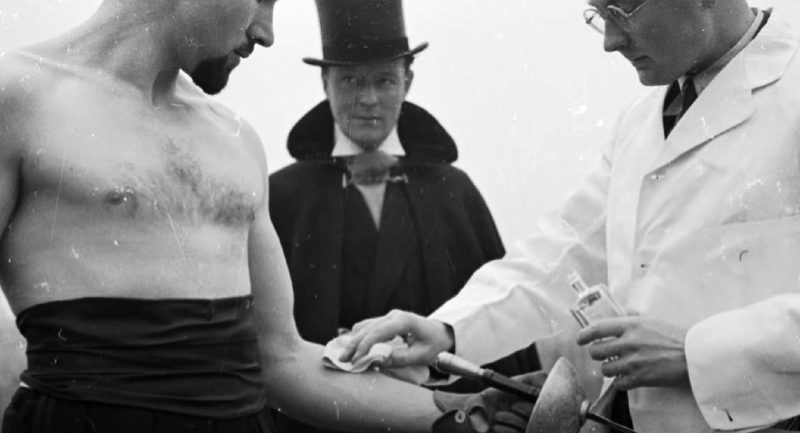
Yes, unfortunately, people have died from a foil.
As much as the rules are made to protect fencers from getting injured, it is still a dangerous sport that can lead to an injury.
The first foils were far deadlier than the modern variants. Interestingly enough, there have been cases in history where people fought with sharp foils even naked. The sign of blood will show whether one has won or the other has. However, this was extremely rare and a battle to the death with the foil usually didn’t happen.
In the present day, there are eight total instances of somebody dying from modern Olympic-style fencing. The most recent death is the foil fencer named Vladimir Smirnov (1982).
In Conclusion
Fencing is one of the most valuable remnants left of the usage of swords in our past. The earliest and most used fencing sword is the foil. That is why when a fencer is wielding a foil, they carry with them a part of every sword used in the past used for dueling.
